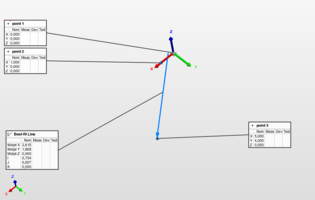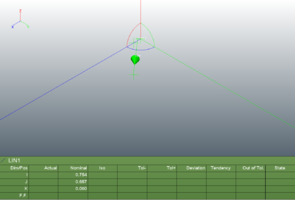I am not sure if this question should in statistic forum or here. I write it here. But if it is relevant to statistic, please let me know.
I have 3 points in space and I would like to get the best-fit line from these points. Let's say P1(0, 0, 0), P2(1, 0, 0) and P3(5, 4, 0). I just made them up. It is possible to use lots of points, let's say 1000.
I know it is really easy to do that in 2D using regression analysis method. However, it is so confusing when it is 3D.
Thank you for your help in advance.
I have 3 points in space and I would like to get the best-fit line from these points. Let's say P1(0, 0, 0), P2(1, 0, 0) and P3(5, 4, 0). I just made them up. It is possible to use lots of points, let's say 1000.
I know it is really easy to do that in 2D using regression analysis method. However, it is so confusing when it is 3D.
Thank you for your help in advance.


